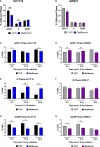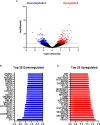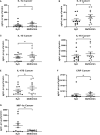Metformin is a metabolic modulator and radiosensitiser in rectal cancer
- PMID: 37601689
- PMCID: PMC10435980
- DOI: 10.3389/fonc.2023.1216911
Metformin is a metabolic modulator and radiosensitiser in rectal cancer
Abstract
Resistance to neoadjuvant chemoradiation therapy, is a major challenge in the management of rectal cancer. Increasing evidence supports a role for altered energy metabolism in the resistance of tumours to anti-cancer therapy, suggesting that targeting tumour metabolism may have potential as a novel therapeutic strategy to boost treatment response. In this study, the impact of metformin on the radiosensitivity of colorectal cancer cells, and the potential mechanisms of action of metformin-mediated radiosensitisation were investigated. Metformin treatment was demonstrated to significantly radiosensitise both radiosensitive and radioresistant colorectal cancer cells in vitro. Transcriptomic and functional analysis demonstrated metformin-mediated alterations to energy metabolism, mitochondrial function, cell cycle distribution and progression, cell death and antioxidant levels in colorectal cancer cells. Using ex vivo models, metformin treatment significantly inhibited oxidative phosphorylation and glycolysis in treatment naïve rectal cancer biopsies, without affecting the real-time metabolic profile of non-cancer rectal tissue. Importantly, metformin treatment differentially altered the protein secretome of rectal cancer tissue when compared to non-cancer rectal tissue. Together these data highlight the potential utility of metformin as an anti-metabolic radiosensitiser in rectal cancer.
Keywords: colorectal; energy metabolism; metformin; radioresistance; radiosensitiser; rectal cancer.
Copyright © 2023 Buckley, O’Brien, Nugent, Donlon, O’Connell, Reynolds, Hafeez, O’Ríordáin, Hannon, Neary, Kalbassi, Mehigan, McCormick, Dunne, Kelly, Larkin, O’Sullivan and Lynam-Lennon.
Conflict of interest statement
The authors declare that the research was conducted in the absence of any commercial or financial relationships that could be construed as a potential conflict of interest.
Figures








References
-
- National Cancer Registry Ireland (NCRI) . Cancer Incidence Projections for Ireland 2020-2045. Cork, Ireland: National Cancer Registry; (2019).
LinkOut - more resources
Full Text Sources

